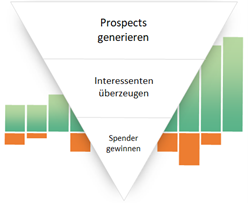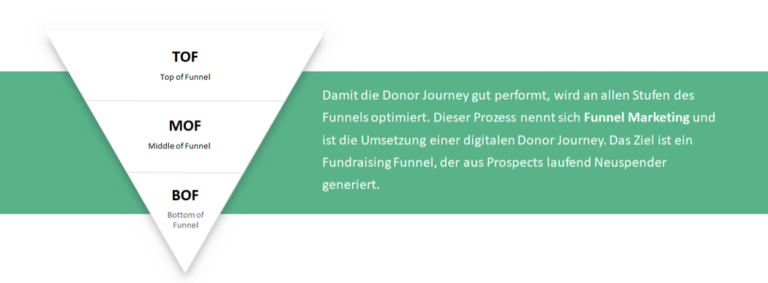The Corona Pandemic has shown us all how quickly change can and must happen when, from one day to the next, we are all prohibited from making physical contact with each other or are restricted to a minimum and we have to switch to various digital channels. For the advertising industry – and especially the fundraising industry – this situation also brings with it immense opportunities. Because we knew even before the pandemic that classic donor target groups are getting older and that long-term growth can only happen online, as other industries are doing. If not now, then when – that’s the motto in fundraising. In my first blog article for Corvis, I explain why now is the right time to take data-driven social media fundraising seriously as a channel for acquiring new donors.
Prejudice within the industry: digital fundraising doesn’t work on a large scale
“The large donation sales are now made with direct mailings and the other established offline advertising activities and that will remain the case”
During my almost two and a half years as Marketing and Communications Manager at the headquarters of one of the best-known Austrian NGOs, I couldn’t avoid the following topic: many marketing and fundraising colleagues in the domestic but also in the European industry were of the opinion that the well-known digital advertising channels do not offer any serious opportunities to fundraise on a larger scale and to recoup their advertising expenses. The general scheme: “the large donation revenues are made with direct mailings and the other established offline advertising activities and that will remain the case”. For me, the thesis was very difficult to understand, since the introduction of the smartphone I have always generated national and international sales with digital advertising channels and also learned in exchange with fundraising and marketing colleagues from abroad (especially Great Britain) that digital fundraising has already become a serious channel.
But afterwards it became clear to me: the former industry colleagues find it so difficult to start seriously because there are few best-practice cases or little data to prove that it works very well. In addition, no new advertising channel will work without a serious willingness to invest a budget, as every experienced marketer is well aware.
Best practice market America
Admittedly, there is little available data in the field of digital fundraising for decision-makers in Austria to fall back on. Only recently, in summer 2020, the English agency “We Are Rally” published a report that England’s first (!) comprehensive benchmark study will be published in summer 2021 in which many large organizations such as Greenpeace, Amnesty International, British Red Cross and many more have agreed to attend. This means that even the UK fundraising community to this day has no valid data to compare against. The British agency is cooperating here with its American partner, the agency “M+R Strategies” which has been publishing its American benchmark study for 14 years. The Americans have been actively involved here for many years, exchanging information about the potential and growth opportunities through data comparisons. The M+R Strategies study of the year 2020 compares and analyzes over 100 “data points” (!!) from 200 (!) North American NGOs and thus offers very exciting insights into the US NGO industry with exciting metrics from the various digital fundraising channels.
Best practice case in Austria: Doctors Without Borders campaign shows how digital fundraising works
In my opinion, Doctors Without Borders is playing a pioneering role in Austria, since the decision was made in 2019 to invest serious budget and time resources in digital fundraising. With three awards in the categories “Online Campaign of the Year”, “Spot of the Year” and “Innovation of the Year”, Doctors Without Borders was the big winner at the most important award ceremony in the Austrian fundraising industry, the Fundraising Award 2020.
Our team was able to implement the first integrated online fundraising campaign for the Doctors Without Borders team in 2019. “First, online communication was rebuilt with a focus on emotional, highly interactive social media ads as part of a full-funnel strategy,” Markus Siuda , CEO of Corvis remembers. “Then we increased awareness and engagement with organic Facebook posts and a series of videos. Finally, we led all interacting users with different, informative ad creatives to a specially developed donation page. Retargeting and ongoing campaign optimization ultimately led to new contacts who were successively converted to online donors. The newly won donors were eventually turned into recurring donors through targeted e-mail marketing.” This sophisticated strategy was crowned with success. In this way, not only could new and younger target groups be developed, but the number of new and long-term donors also doubled in the comparative period.
Understand the digital donor journey as a funnel
But how exactly does full funnel fundraising with social media ads work? Like traditional fundraising, social media ads fundraising is about building a relationship with the target donor. So the first thing we have to do is generate prospects, develop some of them into prospects in the journey and then convert some of these prospects into new donors.













